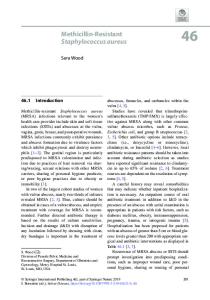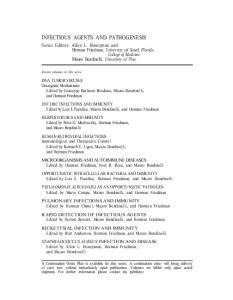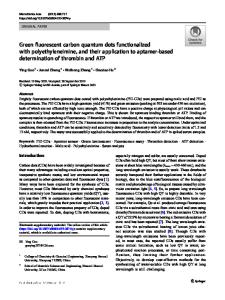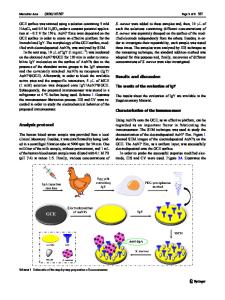Fluorescent Turn-on Aptasensor of Staphylococcus aureus Based on the FRET Between Green Carbon Quantum Dot and Gold Nano
- PDF / 1,348,887 Bytes
- 10 Pages / 595.276 x 790.866 pts Page_size
- 71 Downloads / 293 Views
Fluorescent Turn-on Aptasensor of Staphylococcus aureus Based on the FRET Between Green Carbon Quantum Dot and Gold Nanoparticle Azam Bagheri Pebdeni 1 & Morteza Hosseini 1
&
Mohammad Reza Ganjali 2,3
Received: 21 February 2020 / Accepted: 15 July 2020 # Springer Science+Business Media, LLC, part of Springer Nature 2020
Abstract This paper describes a novel strategy based on fluorescence energy transfer (FRET) with green synthesis of carbon quantum dots (CQDs) and gold nanoparticles (GNPs) for the detection of one of the most pathogenic bacteria, Staphylococcus aureus (S. aureus). Novel green CQDs with blue color emission and high quantum yield were synthesized from olive leaves via the hydrothermal method. The fluorescence of the CQDs was quenched in the presence of aptamers and GNPs. After addition of specific bacteria, the aptamer–target complex was formed and the emission of the free CQDs returned. The linear range of this aptasensor was 108 to 101 CFU/mL with a detection limit as low as 10 CFU/mL for S. aureus. The proposed aptasensing approach has been successfully used for the assay of S. aureus in human serum, milk, and orange juice. Due to its simplicity and effectiveness, this system exhibits great promise as a practical aptasensor for the detection of other bacteria and biomolecules. Keywords Staphylococcus aureus . Carbon quantum dots . Aptamers . FRET
Introduction Carbon quantum dots (CQDs) are one of the fluorescent nanoparticles that have recently attracted much attention for use in optical biosensors. This is because CQDs have excellent advantages including biocompatibility, low toxicity, facile synthesis, good stability in aqueous solutions, and small particle size. CQDs have many hydroxyl and carboxyl groups on their surface and through these functional groups, and they conjugate to other biomolecules (Arkan et al. 2018). The surface passivation and the synthetic method of CQDs have important
Electronic supplementary material The online version of this article (https://doi.org/10.1007/s12161-020-01821-4) contains supplementary material, which is available to authorized users. * Morteza Hosseini [email protected] 1
Department of Life Science Engineering, Faculty of New Sciences & Technologies, University of Tehran, Tehran, Iran
2
Center of Excellence in Electrochemistry, School of Chemistry, College of Science, University of Tehran, Tehran, Iran
3
Biosensor Research Center, Endocrinology and Metabolism Molecular-Cellular Sciences Institute, Tehran University of Medical Sciences, Tehran, Iran
roles that affect their quantum yield (QY). We can obtain CQDs with high QY by using proper quantities of the chemical groups such as co-doped sulfur and nitrogen (Lin et al. 2019; Wang et al. 2019). We can synthesize CQDs with chemical and natural precursors and via different synthetic methods (Sun and Lei 2017), such as laser ablation, discharge, chemical oxidation, microwave irradiation, and the hydrothermal methods. Fine optical properties of CQDs have resulted in the vast employment of
Data Loading...











